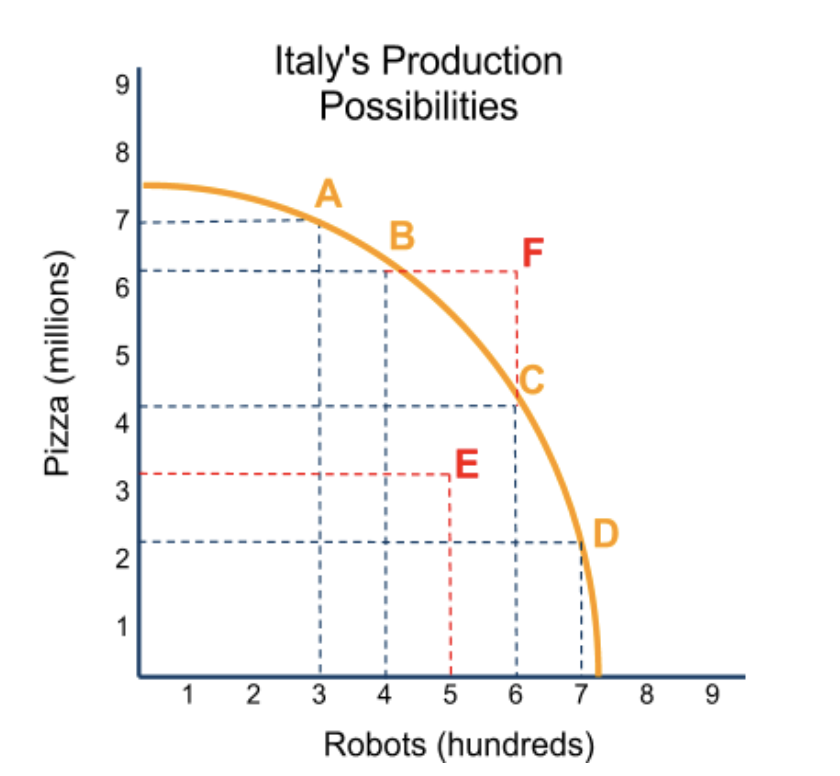Fundamental Concepts in Economics
Scarcity (稀缺性 / 希少性 / 희소성): Economics revolves around how limited resources are allocated to meet society's endless wants and needs (需求与愿望 / 需要と欲求 / 욕구와 필요).
Trade-offs (权衡取舍 / トレードオフ / 상충 관계): Individuals and societies must constantly make choices, balancing between alternatives for production and consumption.
Opportunity Cost (机会成本 / 機会費用 / 기회 비용): Opportunity cost represents what is sacrificed when a choice is made; essentially, "the opportunity lost."
Scarcity
Scarcity arises because factors of production (生产要素 / 生産要素 / 생산 요소) are finite, but human wants are infinite.
- What to produce?
- How to produce?
- For whom to produce?
Examples of Scarcity:
- Scarce Goods (稀缺商品 / 希少商品 / 희소 상품): diamonds, apartments, drinking water.
- Non-Scarce Goods (非稀缺商品 / 非希少商品 / 희소하지 않은 상품): air, saltwater, love.
Factors of Production
- Land (土地 / 土地 / 토지): Natural resources like soil, minerals, and water.
- Labor (劳动力 / 労働力 / 노동): Human work, both physical and mental.
- Capital (资本 / 資本 / 자본): Tools and technology used in production.
- Entrepreneurship (企业家精神 / 企業家精神 / 기업가 정신): Innovation and creativity in production.
The Basic Economic Problem
With limited resources and unlimited human wants, every economy must address three questions:
- What should be produced?
- How should it be produced? (labor-intensive vs. capital-intensive methods)
- For whom should it be produced? (distribution of goods and services)
Economic Systems
- Free Market System (自由市场系统 / 自由市場システム / 자유 시장 시스템): Minimal government control, driven by supply and demand.
- Command System (指令性系统 / 計画経済システム / 명령 경제 시스템): Government controls production and allocation to promote equality.
- Mixed System (混合经济系统 / 混合経済システム / 혼합 경제 시스템): Combines free-market and command elements, common in most modern economies.
The Production Possibilities Curve (PPC)
The PPC represents the trade-offs involved in using limited resources or time.
Example: Sarah has 10 hours of free time daily that she can use for either "work" or "play".
- The opportunity cost of one hour of work is one hour of play.
- Moving from 3 hours to 7 hours of work means giving up 4 hours of play.
- Sarah cannot spend all 10 hours on both work and play; she must make choices.
The PPC model is a tool to illustrate the economic decisions faced by individuals, companies, or nations. Let's use one example to understand this better.
Example: Italy’s Production Possibilities:
- Italy can produce either 7.5 million pizzas or 750 robots.
- Italy cannot produce both at full capacity, thus facing a trade-off in resource use.
- Which means Italy cannot product 7.5 m pizzas AND 750 robots

(JASON WELKER: THE ECONOMICS CLASSROOM)